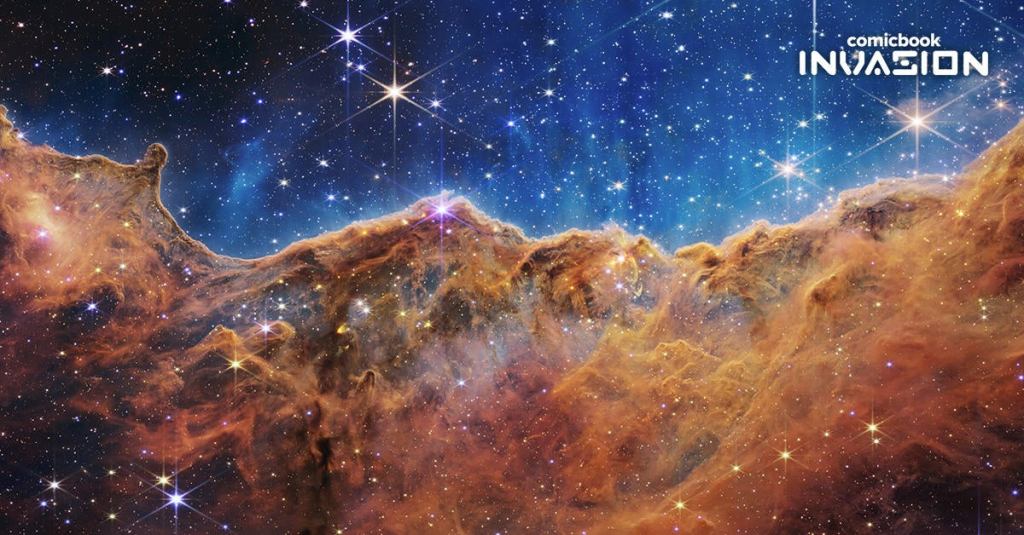Hours after the Webb Telescope’s first-ever image was released by President Joe Biden, the National Aeronautics and Space Administration released four more images from the cosmic observatory, each one more stunning than the last. While the first image showed hundreds of galaxies in a cluster known as SMACS 0723, each of the four new images is much more focused.
Videos by ComicBook.com
There’s the Southern Ring Nebula, in which NASA researchers captured a dying star thrusts cosmic dust across the sea of space. Then there’s Stephan’s Quintet, five galaxies featured in the Christmas classic It’s a Wonderful Life. That’s not to forget the one image that might most stunning of them all, an incredibly high-resolution look at hundreds of stars being born in the cosmic cloud known as the Carina Nebula.
“Called the Cosmic Cliffs, Webb’s seemingly three-dimensional picture looks like craggy mountains on a moonlit evening,” NASA says of the nebula. “In reality, it is the edge of the giant, gaseous cavity within NGC 3324, and the tallest “peaks” in this image are about 7 light-years high. The cavernous area has been carved from the nebula by the intense ultraviolet radiation and stellar winds from extremely massive, hot, young stars located in the center of the bubble, above the area shown in this image.”
As the space agency has said, these photos are some of the deepest photos ever taken of space.
“If you think about that, this is farther than humanity has ever moved before,” NASA administrator Bill said earlier this year. “And we’re only beginning to understand what Webb can and will do. It’s going to explore objects in the solar system and atmospheres of exoplanets orbiting other stars, giving us clues as to whether potentially their atmospheres are similar to our own.”
With the first pictures released, the first missions using the Webb Space Telescope are already underway. That means scientists are already hard at work learning more about the furthest reaches of cosmos using humanity’s most elaborate observatory. Expect more pictures and data captures to be unveiled in the coming weeks.









